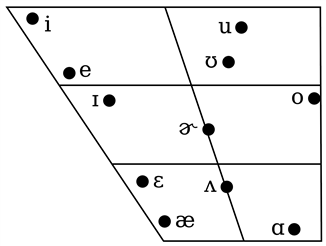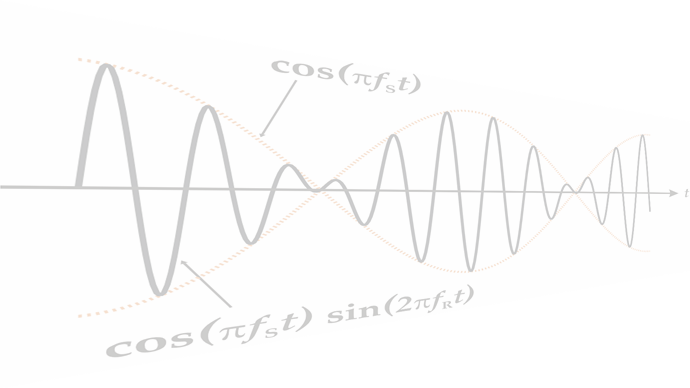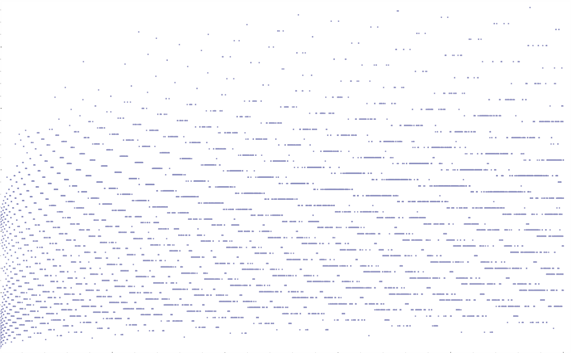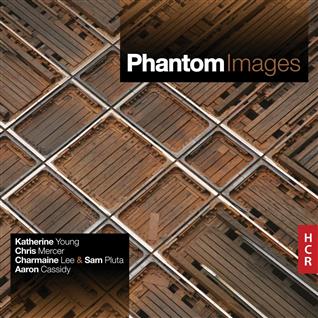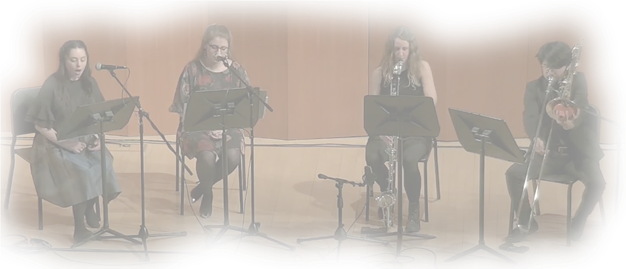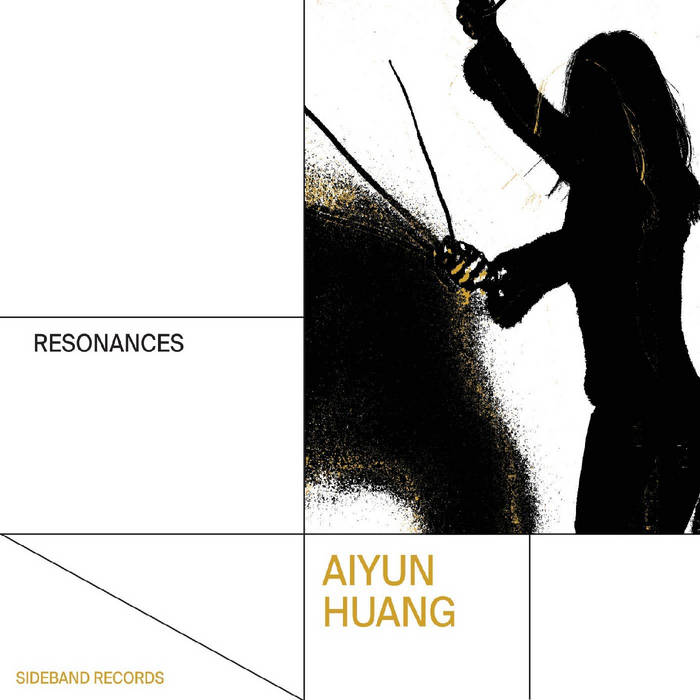Recent Compositions
.............................................................
Compositions since 2013. Click here for a complete list of compositions currently available for performance or broadcast.
Scores, recordings, and performance materials are available upon request. Contact the composer at camercer@hotmail.com.
.............................................................
Phantom Image
2018
Studio orchestra
Instrumentation:
4 Woodwinds (ocarina, wooden flute, wooden slide whistle, panpipes)
6 Trumpets
4 Trombones
3 Pianos
5 Electric Guitars
6 Percussion (doubling as 6 zithers)
10 Violins
8 Cellos
I played the parts one at a time, section by section, recording each part in a precise room location between a stereo microphone pair in order to approximate the seating arrangement of a typical orchestra. Carefully matched digital reverbs enhance the sense of depth and cohesion in the space, placing each instrument group in the correct foreground/background relationship to the listener. The effect should be that of 46 musicians playing together in the same room.
But there's a twist. This orchestra can do things that orchestras shouldn't be able to do. Cellos can spontaneously morph into clarinets. Brass instruments can sprout their own woodwind doublings. Pianos move seamlessly between sixth-tones and quarter-tones as though the instruments were being retuned mid-performance; they add and remove "preparations" at lightning speed. Brass players seem equipped with an enormous array of mutes and plungers. Strange hybrid instruments emerge from familiar ones and disappear into yet others.
When these impossible things happen, they do so in the “correct” room location, as if they really were emanating from an instrument. In order to achieve this illusion, I limited myself to processing techniques that would maintain the instrumental essence of the original performances and realistic room reflections. Thus, most of the effects in the piece are achieved via spectral editing, micro-level envelope manipulation, and some good old-fashioned filtering and compression.
The term phantom image refers to the illusion of "center" in a stereo field. In this piece, the entire orchestra is a phantom image—46 performances by a single person engineered to sound like an otherworldly ensemble in a real-world space.
(Includes works by Katherine Young, Sam Pluta, and Aaron Cassidy)
.............................................................
Found in Translation
2018
Percussion and live electronics
The computer performs an algorithmic model of a percussion piece, essentially a live audio score. The percussionist listens to the algorithmic score through headphones and attempts to realize the piece, as she is hearing it, on objects of her own choosing. Since the audio score is different in its details every time, the performer can never entirely learn it, but must instead attempt to “translate” it in real time. The computer analyzes the live percussion and generates an accompaniment using algorithms derived from the original audio score.
The piece was written for Patti Cudd.
.............................................................
Collatz 27
2019
12-channel sound
Specifically, it's a sonification of Collatz series 27, which is referred to on the above Wikipedia page. A visual display accompanies playback so that listeners know where they are in the series.
Section lengths are mapped simply: 1 = 100ms, 9232 = ca. 15 minutes and 38 seconds.
Think of the piece as a 3-hour, 111-note melody played on a giant synthesizer. The same synthesis algorithm that produces the blip at the end that corresponds to 1 also produces the long, slowly evolving texture that corresponds to 9232. The synthesizer is based on the Stockhausian principle of timbre breaking down into impulses, so the "note value" (Collatz number) sets a group of impulse trains, filter bank fundamental frequencies, modulation rates, etc. Values in the 1-500 range produce something akin to "notes." From about 700 to 2000 they produce rainforests. From 3000 to 6000 they create an "evil factory" ambience. Above 7000 the texture resembles an inscrutable ritual.
Collatz 27 was premiered at Northwestern University on June 8 and 9 in a version for 12-channel playback.
Here are a couple of fun Numberphile videos on the Collatz series:
.............................................................
/R/-text
2017
Two sopranos, bass clarinet, trombone, live electronics
/R/-text sets an exploration of modern American English inside a larger meditation on the connections between human speech and non-human primate vocalization.
Sources for the work include: the male half of a white-cheeked gibbon duet, the territorial advertisement calls of a species of lemurs called Indri, and the alarm calls of the collared lemur. The pitch content of the piece derives from intervals found in the analysis of these vocalizations. The clarinet realizes this material fairly directly during a pair of solos based on gibbon and Indri vocalizations.
The human aspect of the piece is concerned with American conversational English, in particular the R-colored vowels that form the primary sonic signature of General American English. The two sopranos vocalize written phrases by first learning to speak them in normal conversational cadence, then removing the consonants and subjecting the remaining vowel phrases to the dynamic time and pitch transformations specified in the score. Later in the piece vowel phrases are filtered through additional vowel superimpositions.
For a while, the semantic content of the human and non-human primate vocalizations closely track. Eventually, the content of the human vocalization becomes self-reflective, concerned with the social history and phonetics of R-colored vowels. At the end, the two sopranos briefly regain their consonants and normal speech cadence to quote from a linguistics textbook.
The piece was written for Fonema Consort.
.............................................................
Vowelscape
2015
Four vocalists, live electronics
Vowelscape is an exploration of the natural conversational cadences of American English. The text was chosen for its ordinariness and lack of specificity. (Examples: "I would be willing to give that a try" and "I just didn't mention it" and "I brought another, just in case.") The performers first learn to read the text in a natural, everyday manner; next, they learn to do so while omitting the consonants. In addition to this vowel-only reading style, the score calls for further transformations such as vowel morphing and cross-synthesis, time stretching and compression, pitch transposition and bending. The live electronics analyze the pitch contours and changing vowel formants of each vocalist to drive a set of synthesizers and audio transformations, creating a vowel-driven accompaniment that is highly responsive to the nuances of the vocal performance.
The piece was written for the Evergreen Experimental Music Ensemble directed by Arun Chandra.
[Vowelscape at 14:15, but the whole show is excellent!]
.............................................................
Its Spectral Beating Heart
2016
8-channel sound
This piece is an homage to that venerated member of the experimental music instrumentarium, the automotive compression spring. The piece uses 8 such springs and explores the beating and pulsing patterns that lurk with their complex spectra. Having found similar patterns in flute spectra, I have mingled the two sounds. Yes, the piece is well aware that it is retro, and doubles down in the closing moments of heartfelt 80s synthesizer pastiche.
.............................................................
Sawbuzz and Cauldron Tide
2014
8-channel sound
The source materials were performed by the composer using a mix of analog and digital synthesis techniques. The resulting composition captures the performative energy of the original materials and derives its structural logic from the contours and pacing of those performances. The spatialization uses interlocking and overlapping fields to achieve an 8-channel mix that maintains transparency despite dense layering. The title refers to the two main types of material in the piece: Buzzy, undulating lines play out against and within a chaotic, bubbling brew.
.............................................................
Concerto Chamber
2021
Solo percussion (prepared guitar), live electronics
The percussionist plays a guitar on a table using mallets, guitar slide, rubber
ball, and triangle beater. The electronics place the percussionist in an imaginary
"chamber" in which her actions elicit responses from an orchestra hidden
in the walls, as it were. I played all the orchestral samples myself, doubling or
harmonizing parts (and creating instrument sections) by physically moving to
appropriate locations within the stereo field. The electronics allow the performer
to interact with and control her orchestral accompaniment. The notation uses
a precise method for varying a given set of gestural materials, which gives the
performer some freedom in shaping the accompaniment at a given moment.
The piece was commissioned by Aiyun Huang.
.............................................................
